
Gloriosa superba is the only species in this genus in the autumn-crocus family (Colchicaceae). With various common names including gloriosa lily, glory lily, fire lily, flame lily, climbing lily, creeping lily, and cat’s claw or tiger’s claw, this highly variable, deciduous, summer-growing tuberous plant from tropical and southern Africa and temperate and tropical Asia (from China to India) is grown as a perennial in mild climates (zones 8-12) and as a summer “bulb” in colder areas for its dramatic flowers. Not a true lily (family Liliaceae), it grows naturally in a wide variety of habitats from forests to thickets to grasslands and even in sand dunes and other nutrient-poor soils. Like other members of the Colchicaceae, all parts of this plant are poisonous, containing high levels of the toxic alkaloid colchicine but especially in the tubers. It can be fatal to humans and animals if enough is ingested. In lower doses it has been used as a traditional medicine. This plant is the national flower of Zimbabwe but is considered a noxious weed in some place such as Australia, some Pacific islands, and some parts of the US.
One to four slender stems which generally grow 1-6 feet long (but can be up to 15 feet under ideal conditions) emerge from a fleshy, red-brown, elongated, often forked tuberous rhizome in spring. The numerous, soft, oval- to spear-shaped, glossy emerald green leaves are generally produced alternately along the stems but sometimes are opposite or whorled, too. Each sessile leaf has strong, parallel veins and tapers at the tip into a 1¼-2” inch long coiling, clinging tendril which allows this scrambling plant to ascend other plants or structures. The stems die back in late summer or fall.
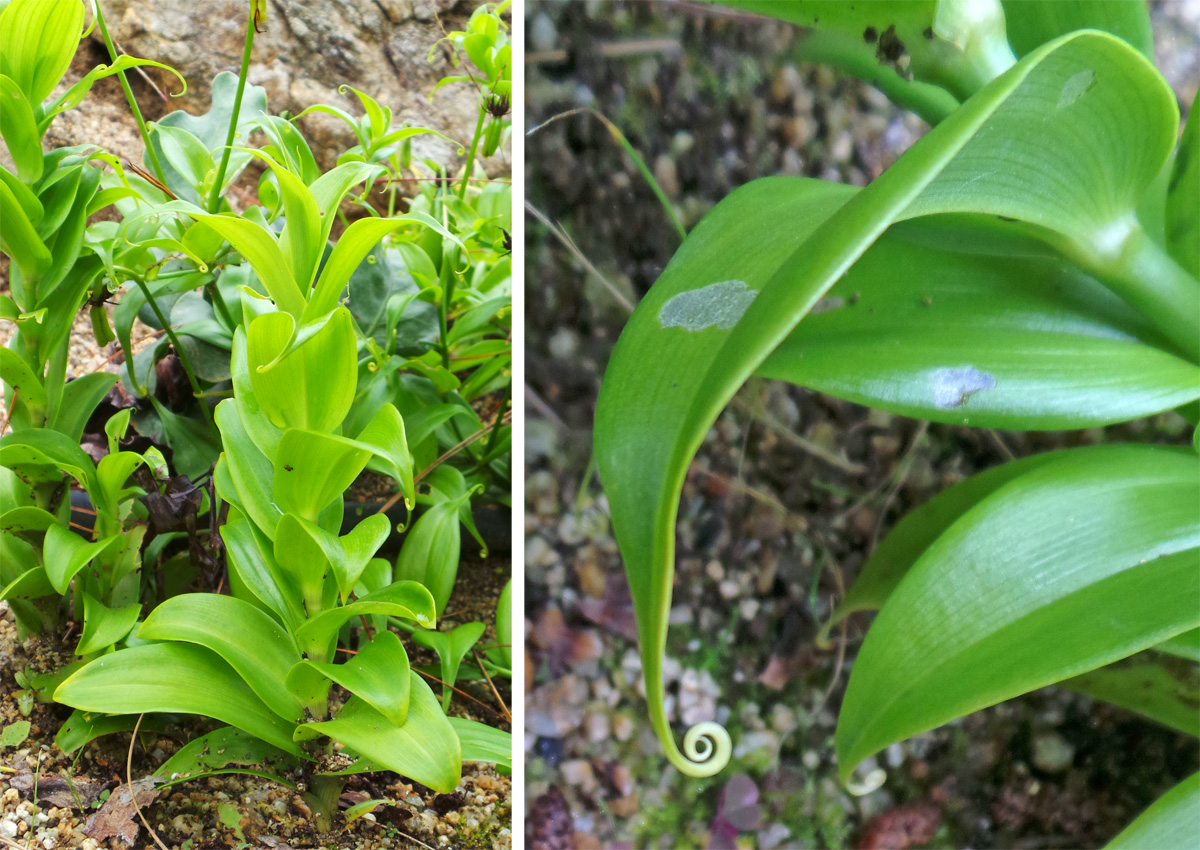

The showy, solitary flowers appear from mid-summer to fall on pedicels (flower stalks) up to 7½ inches long in the leaf axils. Most types have nodding flowers but some varieties arch upward when they open. Each single flower has six widely separated, reflexed (bent backwards so that they are pointing upwards) tepals (three petals and three sepals 2-3 inches long which all appear similar), six long outward-spreading stamens (up to 1½ inches long) with large yellow anthers, and a prominent trifurcate style up to 2 inches long bent sharply outwards from the point of attachment to the green ovary.
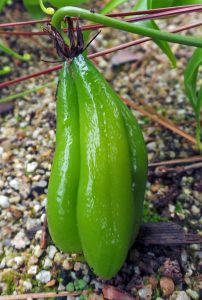
The tepals are most often bright red to orange, sometimes with yellowish bases but may also be cream, yellow, purple-red or bicolor. Often the colors deepen with age. The tepal margins may be very wavy or curling. In their native habitat flowers are likely pollinated by butterflies and sunbirds. Pollinated flowers are followed by large, fleshy, oblong fruits (leathery, 3-valved capsules containing about 20 rounded red seeds) 2 to 4½ inches long.
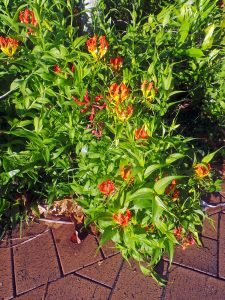
Grow gloriosa lily in full sun in the ground or in containers. Plant the tubers in rich, well-drained soil after the last frost (or start indoors earlier and move outside after last frost), placing them carefully (they are quite brittle) in a horizontal position, 2-4 inches deep. The deeper they are planted (and the fewer nutrients provided) the shorter the vines and more erect the plant can be. Keep evenly moist when growing, and fertilize with dilute fertilizer monthly when in leaf. Fertilizing will encourage larger flowers but also more vegetative growth. Provide a thin-wire trellis for the vines to climb or place near another plant they can scramble through and up. The stems can be damaged and growth stopped if handled too much to train or redirect them.

Although often grown as an annual, tubers can be lifted after the plants flower and before first frost to dry and store over the winter in a cool location. However, because the tubers are brittle, it is often much easier to leave the tubers in containers year-round, sinking the pots to the rim in the garden in the late spring and digging the whole thing in the fall to bring indoors, or just using them as patio plant seasonally. This plant can also be used as a houseplant in a bright, sunny window, but will need to be forced into dormancy after bloom by tapering watering to dry out over the winter. This plant does best with cool nighttime temperatures (60ºF’s) and moderate daytime temperatures (70ºFs).
Although gloriosa lily can be propagated from seed, most ornamental plantings are grown from the tuberous rhizomes which can be divided no more frequently than every three years. Tubers should remain dormant through the winter, with new growth emerging slowly in late spring or early summer, then rapid growth once the weather warms. Seed germination is erratic and even after stratification may take up to a year to germinate. It will take 3-4 years for new plants to flower.
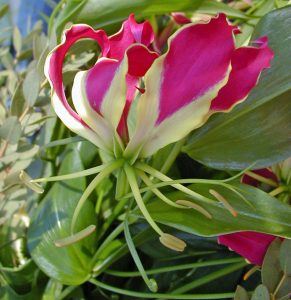
Named cultivars include:
- ‘Citrina’ – has yellow tepals with maroon stripes.
- ‘Grandiflora’ – has large golden yellow flowers.
- ‘Lutea’ – has all yellow flowers.
- ‘Nana’- is a dwarf form.
- ‘Rothschildiana’ – has wavy-edged, strongly reflexed bright red or scarlet tepals with yellow near the base and along the margins, and bright green stamens. This variety, named after Lionel Walter, the second Baron Rothschild, who is credited with bringing the flower to Europe from Africa, is sometimes offered as Gloriosa rothschildiana.
- ‘Simplex’ – has deep orange and yellow flowers.
– Susan Mahr, University of Wisconsin – Madison





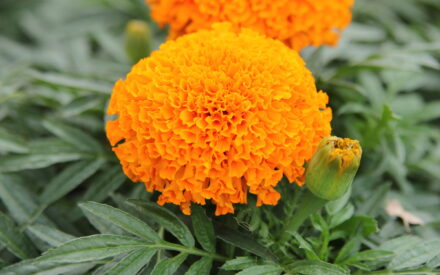 Marigolds
Marigolds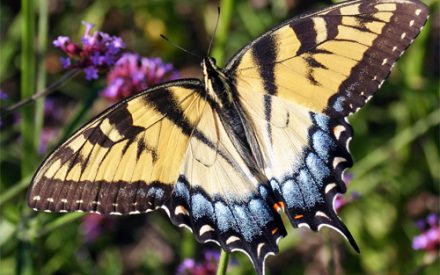 Create a Butterfly Garden
Create a Butterfly Garden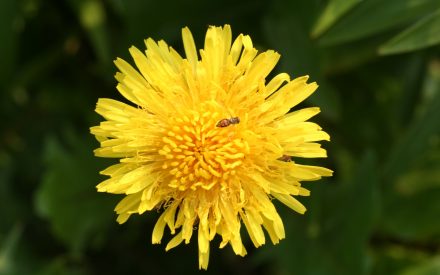 Plant Flowers to Encourage Beneficial Insects
Plant Flowers to Encourage Beneficial Insects Forcing Bulbs
Forcing Bulbs


